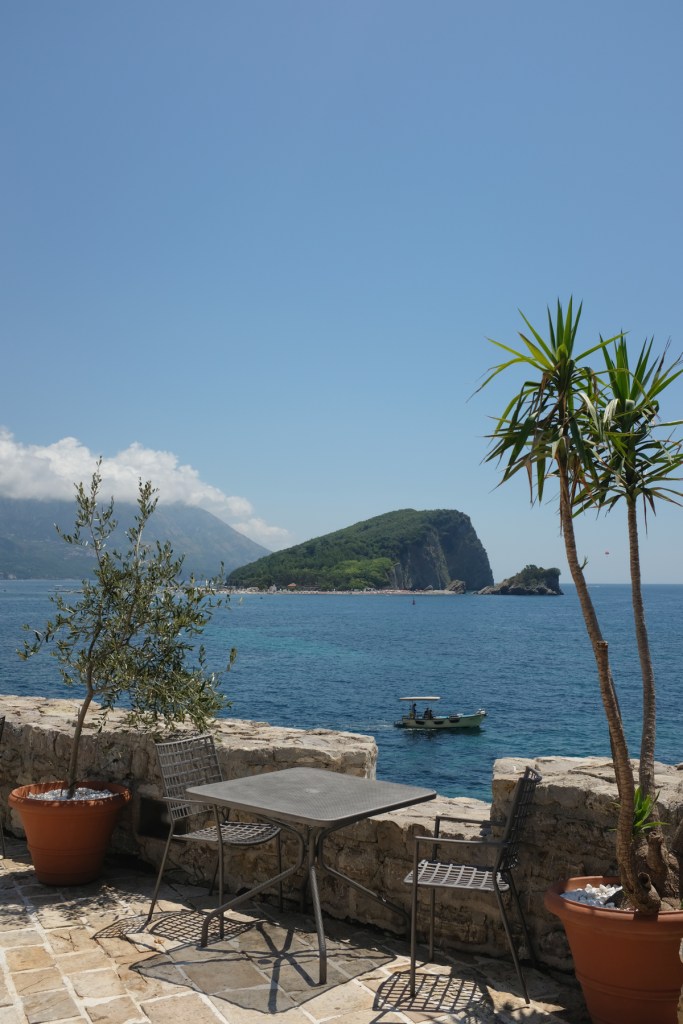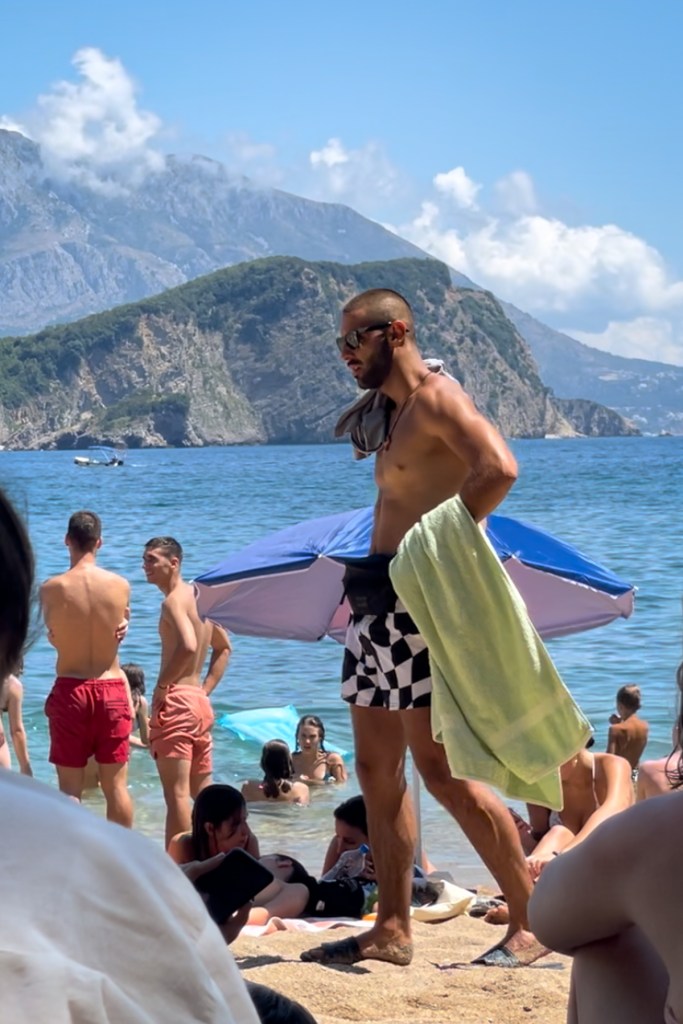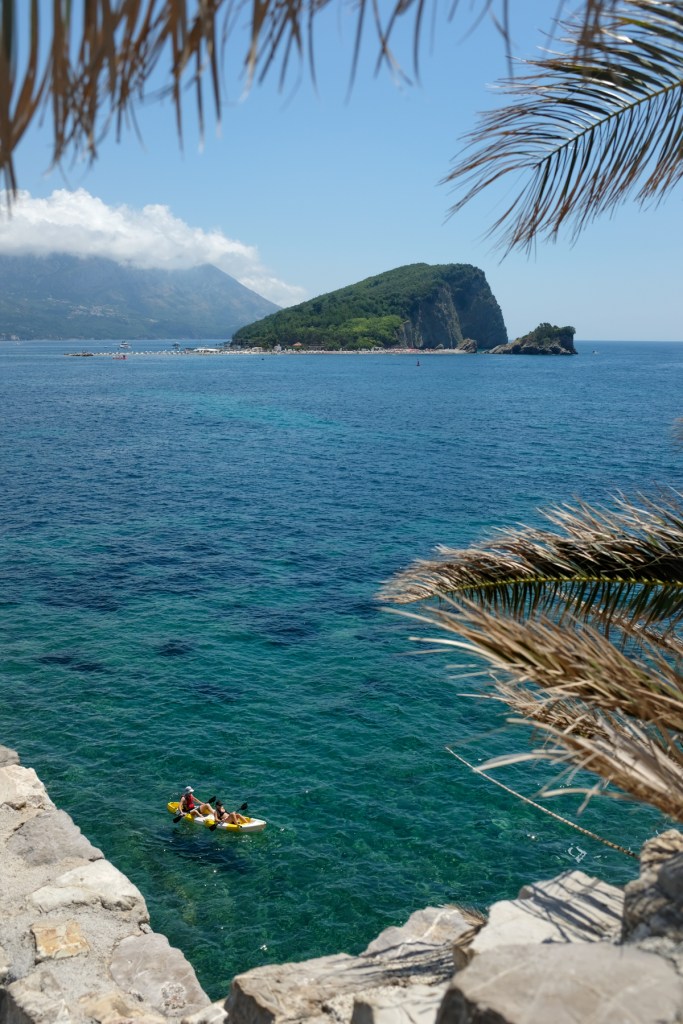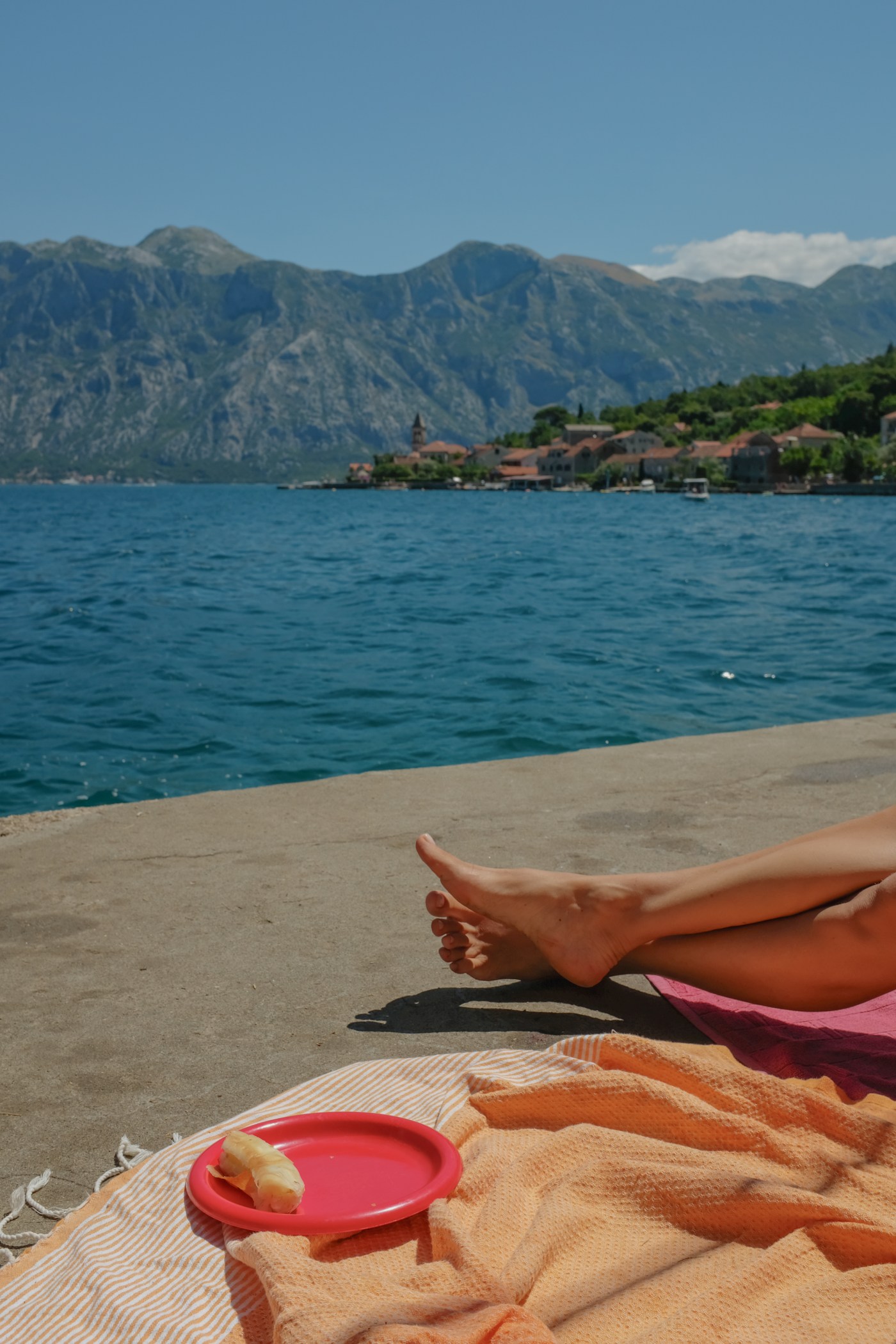My first memory of Montenegro was the ascent up the Bay of Kotor. I had been snoozing, as I inevitably do on long rides, when a wave of gasps and whispers passed through the bus. We were a class of college students on a history-themed academic travel across former Yugoslavia, and we were on our way to Cetinje—the former royal capital of Montenegro. Opening my eyes, I was met by the dizzying height of a vertiginous panorama, of mountains shooting up right into the clouds. The only thing which divided my attention from them was the snaking blue tongue of the Adriatic. Its surface was a serene, almost sinister blue. We did not stop there that day. For years, the view of the karsts and the Kotor Bay remained impressed upon my mind like a daguerrotype, beckoning me to this time stand and admire its brazen beauty in stillness. Thirteen summers later, I returned to Montenegro.
It was the Venetians who baptized this part of the Balkans Montenegro, borrowing it from the Slavic appellation Crna Gora, meaning “black mountain.” The origin of the name is likely rooted in the dense evergreen forests that darken the nearby Mount Lovćen forming the hinterland of the Bay. To reach Cetinje during the Middle Ages, Venetian sailors needed to first cross the fortified Kotor and then over Lovćen. Over time, they began to refer to the region as Montenegro, the place over the dark mountain. As dusk huddles over the ramparts of Sveti Ivan above Kotor and casts a shadow on the entire bay, it’s easy to see the inspiration.





The path up the fortifications of Kotor is well trodden these days, and the large and winding bay—colloquially called Boka—has become a fixture for cruise ships and tourists drawn to its fjord-like landscape. During the day, the UNESCO-designated old town is flooded not by seawater, but by the sweat of thousands of visitors. Roughly reliable public transportation known as Blue Line buses connect Kotor with smaller settlements along the bay for €1.50. The arrival and departure times are approximate, and there are few intermediate stops. As Divna explained to me on my first day back in Montenegro, “If you want to hop on a bus, you need to wave it down. If you want to get off, just tell the driver where.” It’s a chaotic system, but it’s cheap, and in a place where the drivers single-handedly weave through one-lane roads while lighting up a cigarette, it works.
Divna is a slender Serbian woman with wavy auburn hair and impeccable English. I met her just outside of Tivat Airport, where she had just dropped off her mother on a flight to Belgrade. She was waiting for a ride that never came. I was searching for a bus stop that didn’t exist. I don’t know if it’s some kind of nomadic optimism or simply nervousness which makes me chattier whenever I’m on the road, but it tends to create opportunities for delightful coincidences. As it turned out, Divna lives in Zurich. While traipsing together along the road towards Tivat and exchanging our experiences of life in Switzerland, we discovered that we also both lived in Scandinavia. I relished hearing her Swedish as much as I enjoyed speaking Norwegian, and we chattered as if we had known each other for much longer than we did. “Du far komma till oss i Stoliv—Come to our place in Stoliv,” she exclaimed. “You can bathe and meet the children. They’ll be so happy have someone from Zurich!”

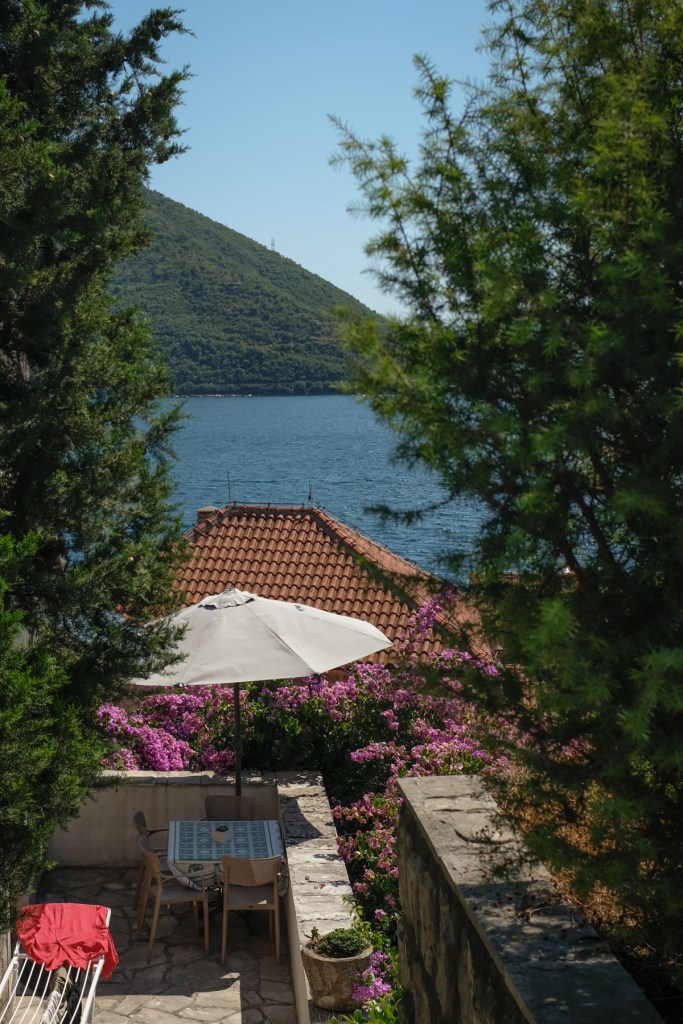


The summer apartment in Donji Stoliv has been in the family for generations, since the time when Montenegro was still unified with Serbia and the rest of the former Yugoslav republics: Slovenia, Croatia, Bosnia and Herzegovina, and North Macedonia. Part of a brutalist waterfront cuboid three stories tall, it came with an unexpected luxury: a private concrete beach with direct access into the sparkling blue bay. We sweetened the lazy afternoon with stories and sirnica, a savory cheese-filled pastry from Bosnia. We played rummy, ate pasta salad and creamed spinach, baked ourselves over the flat concrete until the salt flakes appeared on our skins, and when it became too warm, we retreated under the green shade of the grape vines.
On the opposite bank of the bay, I spotted a small grove of cypresses. Dense and dark like the trees which gave this country its name, they floated over the water solemnly, hemmed into the shape of a tight choir by a low stone wall. In the backdrop, I could barely make out the silhouette of a sky-blue dome. Andreu, Divna’s oldest, picked up on my curiosity. “Das ist Perast—That’s Perast.” The name rang a bell. Not too long ago, I learned about a pair of alluring islets in a Balkan lake off the coast of a fishing village. I realized that I was looking at them now.
The Isle of the Dead, or Sveti Đorđe, as it is officially known, is off limits to the public. There are some who swim to it from Perast’s stone beach, though they must be swift enough to avoid the numerous motorboats on the busy waterway. Hiding amongst the romantic, forlorn cypresses is a story of star-crossed lovers. During the Napoleonic Wars, back when Kotor was known as Cattaro, a soldier named Ante laid eyes on the beautiful Katica on a street in Perast. It was love at first sight, and the pair quickly became a couple. One day, the Perastans revolted against the French and forced the army to withdraw to Sveti Đorđe, where the artillery was kept. Under the order of his superior, Ante fired a cannonball into Perast, and it didn’t take much before the town surrendered. But he had unknowingly struck the house of Katica, killing her. Following the tradition of burying prominent Perastans in the graveyard on Sveti Đorđe, she was interred there. A grief-stricken Ante chose to remain in the island’s monastery, adorning his beloved’s grave daily with candles and flowers until old age took him. Upon his death, he was lain to rest by Katica’s side, and the two were finally reunited in eternal peace.







Not to be outdone, the neighboring Our Lady of the Rocks holds a few tales of its own. Unlike Sveti Đorđe, it is an artificial island. Legend has it that in 1452, two brothers discovered an image of the Madonna and Child on a rock in the bay and built a tiny Orthodox chapel at the apparition site. The chapel was dedicated to the Virgin Mary, a protectress of seafarers, but it was too small to accommodate the number of sailors which came to visit. As a result, local seamen began to sink large stones at the location following each successful voyage, gradually bringing the island into emergence. Under Venetian rule, a larger, Catholic church was finally erected in 1630, almost two hundred years later. The custom of sinking stones carries on to this day in an event known as Fašinada—from the Italian fascia, meaning a “strip” or “band.” Every July 22, a long procession of boats filled with stones sail to the island for its annual aggrandizement.
Within the church on Our Lady of the Rocks are works depicting the lives of various captains and situations on the sea, but there is one most notable among them. As detailed as a painting, only a closer look will reveal the meticulous needlework of Jacinta Kunić-Mijović. A faithful wife, Jacinta began to embroider a votive of the Madonna and Child while waiting for her captain to return from sea. She worked on the tapestry for 25 years, eventually become blind in the process. In between the threads of silk, gold, and silver, she also wove in strands of her graying hair. Whether her love ever came home, it is unknown.




I doubted that I would be able to find another village as sublime as Stoliv or Perast on the bay. So to flee the feeling of a post-climactic fall, I left the cocoon of Kotor on a bus to Budva. A vibrant town on the open Adriatic coastline, Budva pulsates with a youthful energy. At Mogren Beach, snugly nested between the cape and plunging cliffs, the scene is sizzling and sexy. Endless rows of bronze Balkan muscles gleam under the beating sun. From atop the medieval citadel, I gazed upon the sandbars of nearby Sveti Nikola, Montenegro’s largest sea island. Just like the Bay of Kotor had done all those years before, it beckoned me to return, to stand on its sands in stillness.

